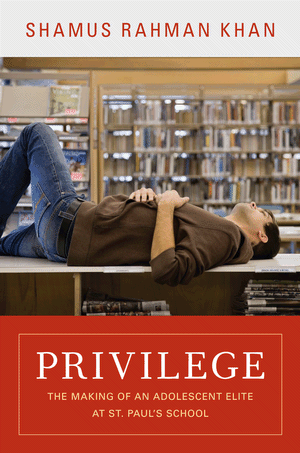
19-year-old Tal Fortgang’s defensive response to those who reminded him to check his (male, white) privilege stirred quite the ‘dialogue’ this past week. Some chose to unpack Tal’s right-wing wunderkind syndrome, while others seized the opportunity to explain how privilege spawns the type of blindness that produces such letters. Proudly. Unapologetic. Defensive. Hurt.
But Tal’s letter also speaks to another critical social justice issue: the problem of gendered inequalities in adolescent self-esteem. This topic is on the minds of many who work for global youth development and gender equality in D.C and New York based headquarters. It has generated a huge discourse of its own these past years, but for some reason failed to make it into the discussion this past week. Despite the fact that Tal could be a poster child for how gendered inequalities in adolescent self-esteem play out in the U.S. context.
Sadly, this silence is typical. Perhaps it’s due to the breadth of the self-esteem and adolescence discourse that has grown exponentially in the last decade. This is due partly to the idea that adolescence is a crucial phase in which young people develop their identities and partly thanks to Nike’s girls-are-powerhouses-let’s-treat-them-as-data-to-validate-our-theory take on adolescence. Most of those involved with this issue, and eager to equalize the distribution of positive self-concepts, know very well that self-esteem goes hand in hand with gender, class and race. The fact that boys tend to have so much more self-esteem represents, in fact, the essence of the problem.
The silence is probably best explained by the fact that privilege is discussed at one table and global adolescent self-esteem at another. The latter is increasingly driven by Nike and the World Bank’s post-feminist neoliberal discourse that essentializes girls into development machines and reinforces harmful stereotypes.
More crucial to this disconnect is that adolescent self-esteem discourse treats the problem as a girls’ issue. It’s her problem to solve rather than a systemic issue or a problem of patriarchy. The underlying logic is that this form of inequality is best addressed by urging girls to spend time and energy on changing their behavior through ‘empowerment’ programs. Meanwhile, the engine of entitlement keeps spitting out boys like Tal left, right and center.
Boys’ higher levels of self-esteem are thus seen as the norm, from which girls deviate. And rather than the boys or the norm itself, it’s the girls who must be corrected for their difference. For example, a few days back, NBC posted a video about a program that professes that teaching girls to brag builds self-esteem. You can see where they’re coming from, but hey! How about boys bragging less? What about no longer condoning and rewarding entitlement and instilling the individualistic meritocratic illusion of ‘I deserved my place’ into kids who are at a clear advantage and who, from that position, are likely to develop wrong ideas about the merit of those who are not at their ‘level’?
Adolescence seems like a great stage in which to tackle the different dimensions of the self-esteem problem and burst the meritocratic myth that lies at the heart of privilege and was the ink to Tal’s epistle. Since schools are central spaces in which the myth of merit is cultivated, this is where change has to come from.
To begin to understand better how elite boys make sense of themselves and their privilege at one elite school in America, check out Shamus Khan’s book, Privilege: The Making of an Adolescent Elite at St. Paul’s School.
(Photo Credit: Princeton University Press)